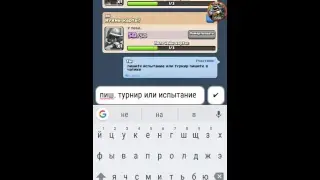Types Of Chemical Bonds - What Are Chemical Bonds - Covalent Bonds And Ionic Bonds - What Are Ions
In this video we discuss how chemical bonds are formed, we cover ionic bonds and covalent bonds. Chemical bonding is important in many different functions of the body.
Transcript and notes
The interactions of 2 or more atoms mainly occur at the outermost shell, or energy level. The result of these interactions results in a chemical reaction. In atoms that have fewer or more than 8 electrons in their outermost energy level, reactions occur that result in the loss, gain, or sharing of electrons with another atom to satisfy the octet rule.
The octet rule means that elements tend to combine so that each atom has 8 electrons in its outermost shell. This results in the formation of structures such as crystals or molecules.
Two atoms of oxygen can combine with one atom of carbon to form carbon dioxide or CO2. There are two main types of chemical bonds, ionic bonds and covalent bonds.
Ionic bonds are bonds where the transfer of electrons takes place. Let’s see how this type of bond works. So, here we have a sodium atom, which has an atomic number of 11, meaning it has 11 protons in its nucleus and 11 electrons in its shells or energy levels.
Shell one has 2 electrons, shell 2 has 8 electrons and shell 3 has 1 electron. And here we have a chlorine atom, which has an atomic number of 17, so 17 protons and 17 electrons. It has 2 electrons in shell one, 8 in shell 2 and 7 in shell 3.
We know that atoms want to have 8 electrons in their outer shell, so Sodium can give up one electron, and now it has 8 electrons in its outer shell, and chlorine can take that electron from sodium and that will give it 8 electrons in its outer shell.
Since the sodium atom gave up an electron it now has 11 protons, which are positively charged, and 10 electrons which are negatively charged. This results in the formation of a sodium ion with a positive charge. An ion is an atom or molecule with a net electrical charge due to the loss or gain of an electron. Since the chlorine atom gained an electron, and now has 17 protons and 18 electrons, it is a chlorine ion with a negative charge.
The positively charged sodium ion is now attracted to the negatively charged chlorine ion, and NaCl or table salt is formed. This is an ionic bond. So, ionic bonding is when an electron transfer takes place and generates 2 oppositely charged ions.
Now for covalent bonds. Covalent bonds are chemical bonds that are formed by the sharing of one or more pairs of electrons by the outer energy levels or shells of two atoms. The 4 major elements of the body, carbon, oxygen, hydrogen and nitrogen almost always form covalent bonds by sharing electrons.
So, for instance, 2 hydrogen atoms can bond by sharing a pair of electrons. Hydrogen is one of the exceptions to the octet rule of having 8 electrons in the outer shell, because it only has one shell. Let’s look at carbon dioxide or co2 again, which form a covalent bond.
Oxygen has an atomic mass of 8, so 8 protons, and 8 electrons, 2 in its inner shell and 6 in its outer shell, so, oxygen atoms want 2 more electrons for their outer shell. Carbon has an atomic mass of 6, 6 protons and 6 electrons, 2 in the inner shell and 4 in the outer shell, so it wants 4 more electrons for its outer shell. They can make each other happy by sharing what they have.
Oxygen atom number 1 can share 2 of its electrons and the carbon atom can share 2 of its electrons with oxygen atom number one, making oxygen atom number one happy. And oxygen atom number 2 can come in and like oxygen atom number one it can share two of its electrons and the carbon atom has 2 more of its own electrons that it can share with oxygen atom number 2. So now all 3 atoms are happy.
By sharing 2 pairs of electrons in this situation a double bond has been formed, and double bonds are important in chemical reactions.
Timestamps
0:00 The gain, lose or sharing of electrons
0:23 What is the octet rule?
0:41 What are ionic bonds?
1:33 What are ions?
2:23 What are covalent bonds?




![[VAC Undetected] TF2 Aimbot - Project Darkstorm [13/08/2012]](https://images.videosashka.com/watch/5mbVwZdgzPY)


